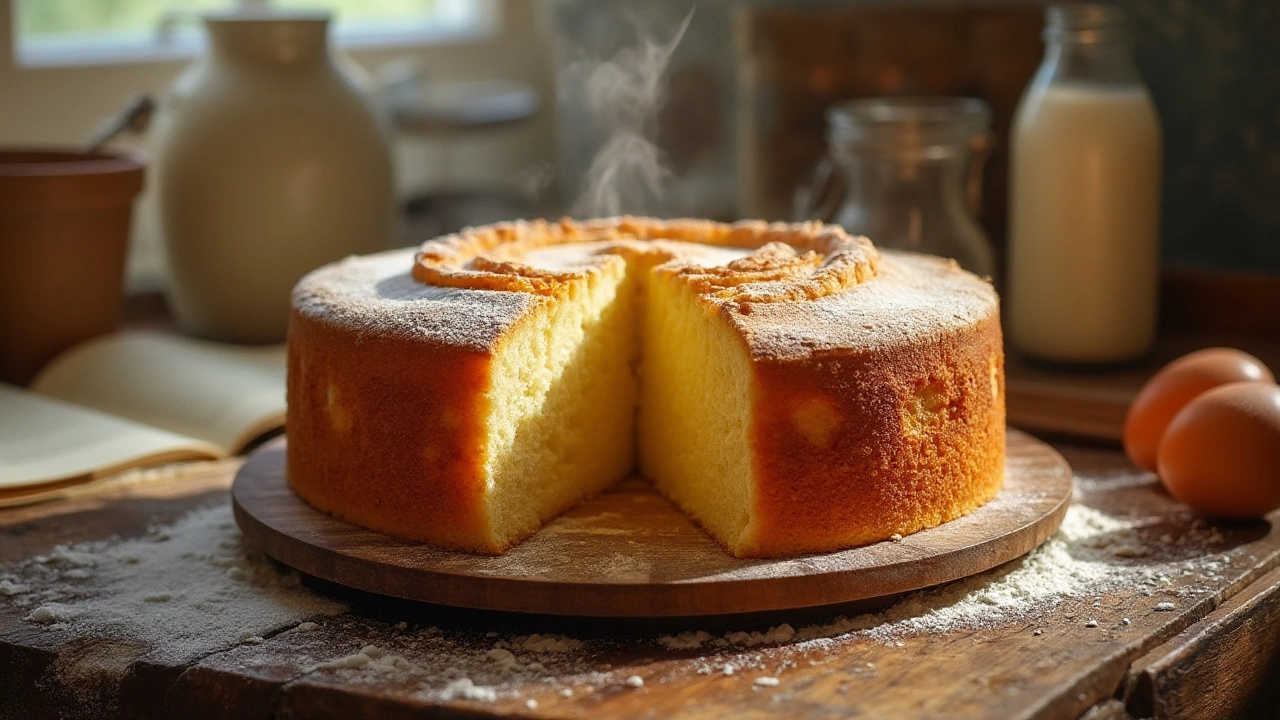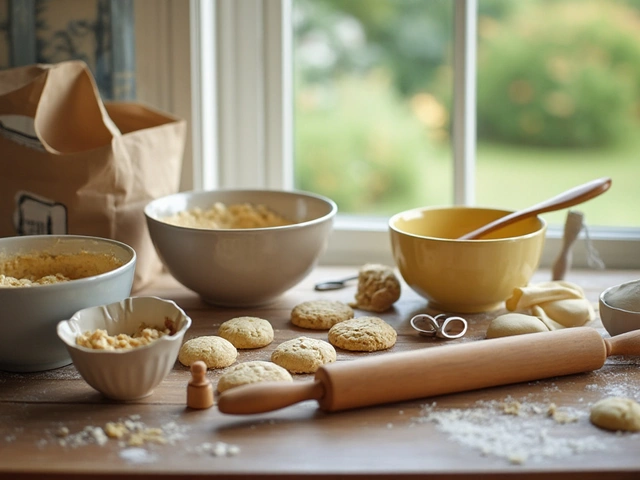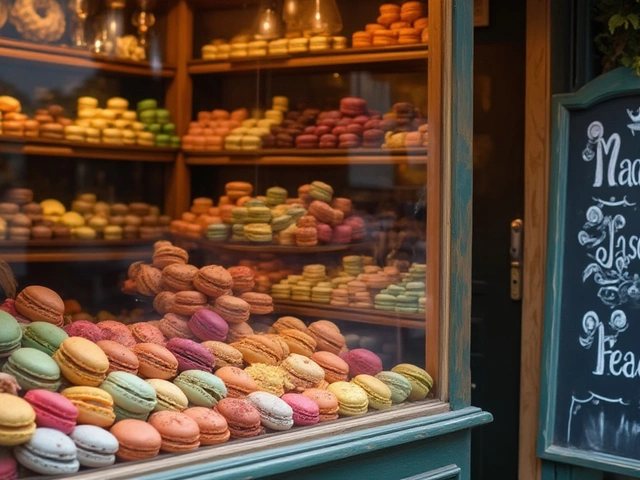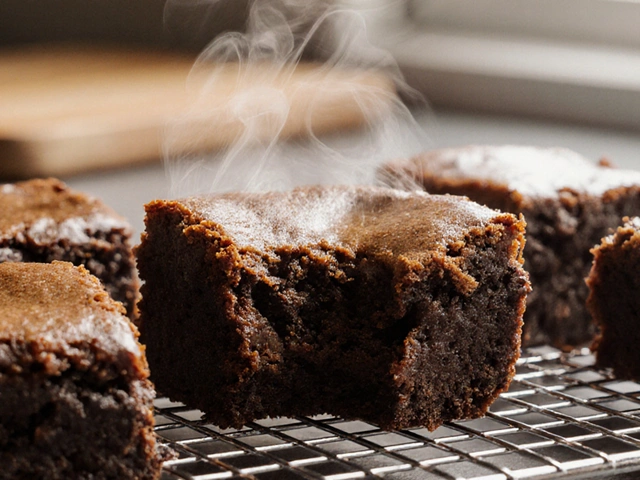When it comes to baking the perfect birthday cake, one of the most cherished qualities is its moistness. A cake that melts in the mouth and leaves a lingering, rich flavor is a delight at any celebration.
Bakers often ponder what makes a cake irresistibly moist. Is it the choice of ingredients, the mixing technique, or perhaps a secret step in the baking process? As we dive into this culinary quest, prepare to unlock the secrets to baking the moistest birthday cake ever. Whether you're a seasoned baker or a curious novice, these insights will transform your next baking adventure into a sweet success.
- Importance of Moisture in Cakes
- Top Ingredients for Moist Cakes
- The Best Types of Moist Birthday Cakes
- Baking Techniques for Moistness
- Creative Decoration Ideas
- Expert Tips and Common Mistakes
Importance of Moisture in Cakes
Imagine slicing into a beautiful cake. The exterior is perfectly iced, vibrant, and appealing. But as you take a bite, the texture is dry and crumbly, negating all effort spent on making it look good. The truth is that moisture can be the defining factor between a cake that is merely tasted and one that is devoured, leaving guests asking for more. The quality of moisture influences flavor, density, and the overall experience of eating cake. It helps ingredients meld seamlessly, offering a cohesive blend of taste in every bite. Bakers strive for this balance, as dryness can disrupt the harmony of flavors, leaving chunks around guests' plates before they're discreetly pushed aside.
Moisture isn't just about the ingredients you use; it's about understanding how they work together. Ingredients such as butter, oil, and milk are often key players in providing a soft and lush texture. Including these ingredients in proper proportions ensures that your cake recipe captures the desired texture that excites the palate. These elements help in binding the cake crumb, preventing the shattering effect dry cakes often exhibit. Humidity levels during baking can also affect how moist your cake turns out. Monitoring environmental factors is crucial; even subtle changes can alter the baking time and texture.
A famous quote from baking guru Mary Berry illustrates this perfectly,
"The secret to a great cake is its texture. A moist sponge is what keeps people coming back for another slice."Understanding this secret highlights why the attention to moisture must never falter. Along with this, the time spent mixing can impact the final product, as over-mixing can lead to a dense cake by removing air that contributes to a light and fluffy bake. Overbaking is another moisture culprit, as leaving the cake in too long causes moisture loss and excessive evaporation, thereby increasing dryness.
To enhance moisture, consider surrounding your cake with ingredients that contain natural liquids, such as fruits that ooze juice and nuts that provide rich oils. Methods like incorporating fruit purees and syrups have long been part of the baker's toolkit, serving to add not only softness but also a burst of flavor that complements your choice of cake. This direction transcends into natural preservatives, like honey or yogurt, which not only sweeten but seal in moisture, elongating the cake's freshness. Endeavoring to balance these elements wisely can distinguish your cake in a room filled with desserts.
Top Ingredients for Moist Cakes
Achieving that perfectly moist birthday cake often boils down to the ingredients you choose. While the art of baking is filled with creativity, certain ingredients are nearly universal in their ability to enhance moisture in your cake. One of nature's magical moist-makers, butter, plays a crucial role. When creamed with sugar, it traps tiny air pockets, helping to create a light, airy texture. However, not all butter is created equal; using high-fat European-style butter can make a discernible difference in your baking results.
Another powerhouse ingredient is oil, a preferred choice for many bakers when aiming for extra moistness. Unlike butter, which solidifies at room temperature, oil remains liquid, contributing to a luscious texture. Whether you opt for canola, vegetable, or even olive oil, your cake will thank you with every moist bite. For those conscious of health or flavor profiles, using half butter and half oil can strike that perfect balance of taste and moisture retention.
"Eggs are the backbone of any great cake – they act as an emulsifier and a binding agent," says renowned baking guru Mary Berry. With the yolk providing fat and the white offering protein, this dualistic nature allows eggs to trap air and add richness, leading to wonderfully moist cakes.
Sugar, often seen just as a sweetener, is an unsung hero in the quest for moisture. It naturally attracts and retains moisture, helping to keep cakes from drying out. To further amplify this effect, brown sugar can be introduced to the mix. Its molasses content not only adds depth and flavor but also enhances the cake's ability to stay tender and moist.
Alternative Ingredients for Extra Moistness
There are times when bakers step off the beaten path, incorporating ingredients like sour cream, yogurt, or buttermilk. These dairy products not only alter the texture by introducing fat but also contribute acidity, which helps tenderize gluten and stunt overbaking. Meanwhile, ingredients like applesauce or mashed bananas can serve as nutritious and flavorsome moisture anchors, perfect for those leaning toward a health-conscious recipe.
Consider experimenting with honey or maple syrup. Unlike granulated sugar, their liquid forms provide a wetness that granulated sugars can't compete with, ensuring your cakes stay delectably soft. These natural sweeteners add a unique flavor, enhancing the overall taste of your moist cake creation while also providing the added benefit of a more complex flavor profile.
Ingredient Impact Table
| Ingredient | Moisture Contribution |
|---|---|
| Butter | Fluffy texture through air incorporation |
| Oil | Stays liquid to enhance moistness |
| Eggs | Bind and trap air for rich moist cakes |
| Sugar | Retains moisture while sweetening |
| Dairy (Sour Cream/Yogurt) | Contributes fat and acidity for tenderness |
| Natural Sweeteners (Honey/Maple Syrup) | Liquid form avoids dryness and enhances flavor |
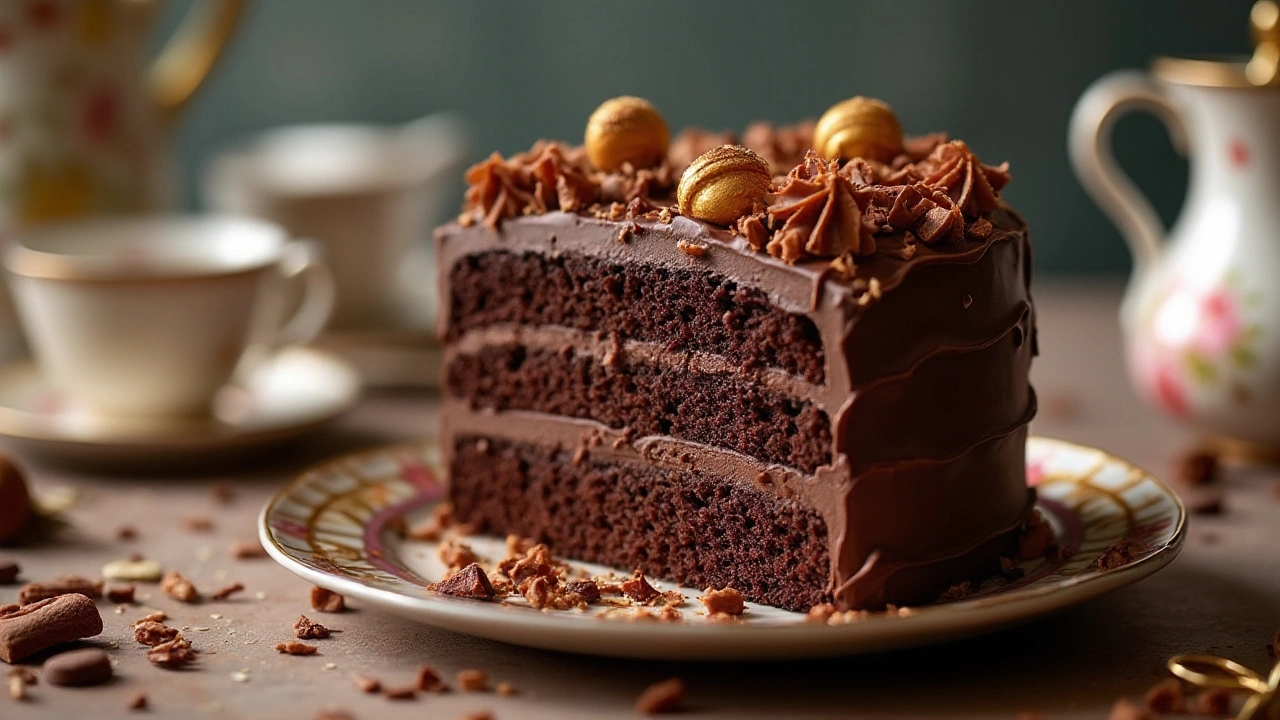
The Best Types of Moist Birthday Cakes
When selecting a cake that's renowned for its moist texture, there's an entire spectrum of flavors and types to explore. Each has its own ingredients and methods that make it particularly succulent and delightful.
One classic choice is the chocolate cake, often revered for its rich, velvety layers that ooze with moisture. Achieving this moistness often relies on the strategic use of ingredients like coffee, which not only enhances the depth of chocolate flavor but also keeps the cake splendidly moist. Many bakers swear by sour cream or yogurt as a secret addition to the batter, lending a subtle tang and tender crumb. The science behind this is that the acidity in these dairy products can break down gluten gently, resulting in a softer texture.
Another contender is the red velvet cake, a favorite for its unique blend of cocoa and buttermilk. This cake's paradox lies in its simplicity; the use of buttermilk cuts through the sweetness, while the texture is kept soft through the inclusion of vinegar or baking soda reactions that aerate the batter. One famous tip from bakers is to brush the cake layers with a simple syrup, a method that traps additional moisture and allows the cake to remain luscious even after a day or two.
An unexpected frontrunner is the carrot cake, where the moisture content directly correlates with the vegetable itself. Grated carrots bring a natural sweetness and an incredible amount of moisture. Incorporating ingredients like crushed pineapple or applesauce can elevate this factor even further. Cream cheese frosting not only pairs perfectly flavor-wise but also helps maintain the cake's moisture when generously applied between layers.
Each of these cakes can be enhanced with creative decoration, but it's the core ingredients and processes that truly make them special. Emphasizing freshness, high-quality ingredients, and mindful baking techniques are critical. Emma Stone, a renowned pastry chef, once said in an interview, "The magic lies in the hands and love of the baker, not just the recipe."
"Adding a bit of whipped cream into your batter, just at the end, brings about a wonderful transformation in how each bite melts in your mouth," she suggests, highlighting the importance of the last touch before baking.
Whether you're preparing for a child's birthday bash or an elegant adult soiree, exploring these cakes offers a delicious promise of moist satisfaction. With a little experimentation and attention to detail, you can master the art of the moist birthday cake, one slice at a time.
Baking Techniques for Moistness
A journey into creating the moistest birthday cake doesn't just rest on choosing the right ingredients; it extends to the method of baking itself. The baking techniques are pivotal, able to either make or break the quest for a luscious, indulgent cake. Not only must these processes be understood, but they must also be meticulously executed to result in a cake that leaves lasting impressions at any gathering. It starts with the batter, where air incorporation is key. Be sure not to overmix once your flour is added; this will ensure a tender crumb, crucial for maintaining that sought-after moist texture.
One essential tip for retaining moisture is controlling temperature and baking time. Always preheat your oven to the required heat before sliding your cake in. This avoids uneven cooking and ensures a stable rise, resulting in a cake that bakes evenly and retains its moisture. Additionally, knowing when to take your cake out of the oven is an art in itself—pull it out the second a skewer comes out with a few moist crumbs. Avoid drying it by leaving it to bake until it's completely clean.
Another technique involves creating a moist environment inside the oven. Professional bakers sometimes place a pan of water at the bottom rack during baking, which generates steam and keeps the cake humid. Interestingly, Julie Richardson, author of 'Vintage Cakes', suggests that damp environments can make a significant difference in moisture retention. She says,
"A simple pan of water does wonders, keeping your cake from drying out too soon."
The Role of Syrups and Soaks
Enhancing moisture can also be achieved through the use of syrups and soaks. Once baked, your cake can be revitalized with a simple syrup, infusing additional flavor and moisture. Glazes made from combining sugar, water, and flavors like vanilla or citrus can be brushed over as soon as the cake is out of the oven. This allows the liquid to quickly penetrate deep into the cake's layers, ensuring a uniform moisture content.Here’s a straightforward syrup step that anyone can try:
- Combine equal parts sugar and water, heating until the sugar is dissolved.
- Allow the syrup to cool slightly before adding any desired flavorings such as liquor or extracts.
- Gently brush over each layer of your cooled cake before frosting.
Resting and Cooling Process Matters
Finally, consider the cooling and resting stages of the baked cake. Once removed from the oven, allow the cake to cool on a wire rack. This encourages airflow around the entire product, preventing condensation from making it soggy. Although it might be tempting to frost immediately, letting the cake settle overnight in a sealed container at room temperature can lead to a more pronounced moist texture when it’s finally ready to be adorned.These techniques, when applied with care, work in unison to create that perfectly moist cake that both tantalizes the senses and leaves you reaching for just one more slice. Happy baking!
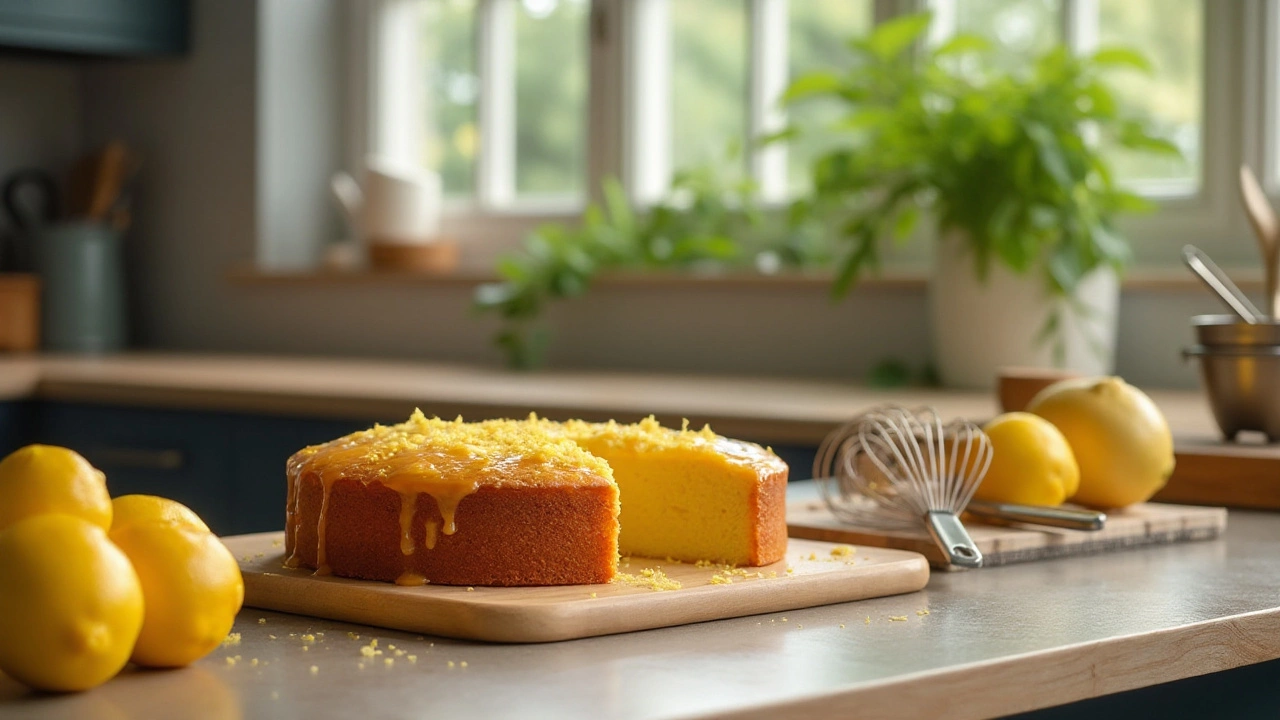
Creative Decoration Ideas
Baking the birthday cake is just the beginning; decorating it takes your culinary masterpiece to a new level. An eye-catching design doesn't have to be complicated but should reflect the theme or mood of the celebration. To start with, consider the colors that best capture the occasion. Bright, vibrant hues signal fun and excitement, while pastels might convey a softer, more elegant vibe. Choose a color palette that harmonizes with the party's decor.
One innovative approach involves using fresh flowers to adorn the cake. Not only are they visually stunning, but they also add a natural touch. Ensure the flowers are free from toxic substances and preferably edible. Roses, pansies, and violets are popular choices, and a gentle rinse before decoration is always recommended. Alternatively, consider a minimalist design by using decorative icing bags to pipe elegant designs onto the cake. This technique requires a steady hand and some practice, but its clean lines and intricate details can be breathtaking.
For a touch of whimsy, edible glitter or gold leaf can add a sparkling finish for a dazzling effect. This hint of shimmer can catch the eye and become a talking point at the party. If you prefer a classic look, a naked cake style, which highlights the cake's layers with minimal frosting, never goes out of fashion. It can be paired with fresh fruits like berries, which provide both a burst of color and taste.
For those in love with handcrafted details, fondant offers endless opportunities. Fondant can be molded into anything from flowers to quirky figures, making it an excellent option for personalizing the cake. While working with fondant might seem daunting at first, its flexible nature allows for creativity to flourish. Imagine a cake with fondant roses gently cascading down the sides or playful shapes that tell a story.
"The beauty lies not only in the taste of the cake but also in its artistry," notes celebrated pastry chef Claire Ptak. "Decorating is where the baker's personality truly shines, turning a simple dessert into a centerpiece of celebration."
For more interactive fun, think about using edible paints or colored dust. These tools allow you to create water-colored effects or add subtle shading and detail. The best part is that each stroke is unique, making your cake an original piece of art.
If accessibility is a priority, simplify decoration by choosing a single, bold element. For instance, a monochromatic cake with a striking ribbon tied around the base creates a simple, elegant statement and is swiftly achievable. The key is to maintain the style consistent while adding a layer of personality that reflects the uniqueness of the birthday cake. Deciding which decorations to use comes down to balancing creativity with the skill level. Whether striving for intricate designs or a simpler aesthetic, each choice becomes a personal expression that enhances the entire culinary experience.
Expert Tips and Common Mistakes
The journey to achieving the moist cake of your dreams is paved with a blend of skill, knowledge, and sometimes a little trial and error. Let's explore some expert tips that can elevate your baking game while shedding light on common mistakes that are best avoided. Seasoned bakers emphasize the importance of the right amount of batter hydration and how unconventional methods, like using sour cream or applesauce, can lock in moisture while adding delightful subtlety to the flavor. These ingredients create a dense texture, ensuring that each bite is lush and satisfying, and they are particularly fantastic for chocolate or carrot cakes, known staples in the birthday cake echelons.
Another notable tip from the pros is to measure ingredients accurately. Embracing the precision of baking means investing in a good kitchen scale to avoid the dry cake doom that can result from too much flour. Subtle shifts in flour measurement can tamper with your cake's fluffiness and moisture. Pay attention to your mixing methods as well. Over-mixing can be more detrimental than we might anticipate, leading to too much gluten formation and that dreaded dry cake. Mix just until the ingredients have come together to preserve the desired tender crumb. This balance is crucial in maintaining the moisture integrity of the cake, keeping it delectably soft.
Many experts stand by the practice of using simple syrups as a finishing touch. An effortless syrup made of equal parts sugar and water brushed onto each cake layer before frosting not only enhances flavor but also imbues it with unmatched moistness. A profound favorite among bakers is the use of buttermilk, which tenderizes gluten and contributes to a moist, rich crumb. Replacing milk with buttermilk can create a sumptuous texture that elevates the cake's overall delectability, giving the baker an edge over dryness.
"A cake's best asset is moisture; it captivates the taste buds and keeps guests coming back for another slice," says Mary Berry, an acclaimed queen of baking.
Now let's delve into common pitfalls. Baking requires attention and respect for the process. One of the most frequent issues is baking time; however, it's not just about the clock ticking. Rely on visual and texture cues more than time. Every oven has its quirks, and over-baking is a common issue that can easily sap your cake's moistness. To combat this, always do a toothpick test but look for just a few crumbs clinging to it — not perfectly clean. Another pitfall is being too eager with hot cakes. Allowing your cake to cool slightly before unmolding can prevent structural disasters and loss of moisture.
Lastly, consider environmental factors, like your kitchen's humidity, which can play a sneaky role in cake preparation. Persistently dry climates may necessitate adjustments to flour quantities to compensate for natural losses during baking. When your cake is an extension of celebration and love, understanding these subtleties and navigating potential pitfalls can make or break the moment. Remember, each carefully thought-out detail serves a greater purpose: crafting a birthday cake not only adored for its taste but also cherished for its moist and luscious texture.

